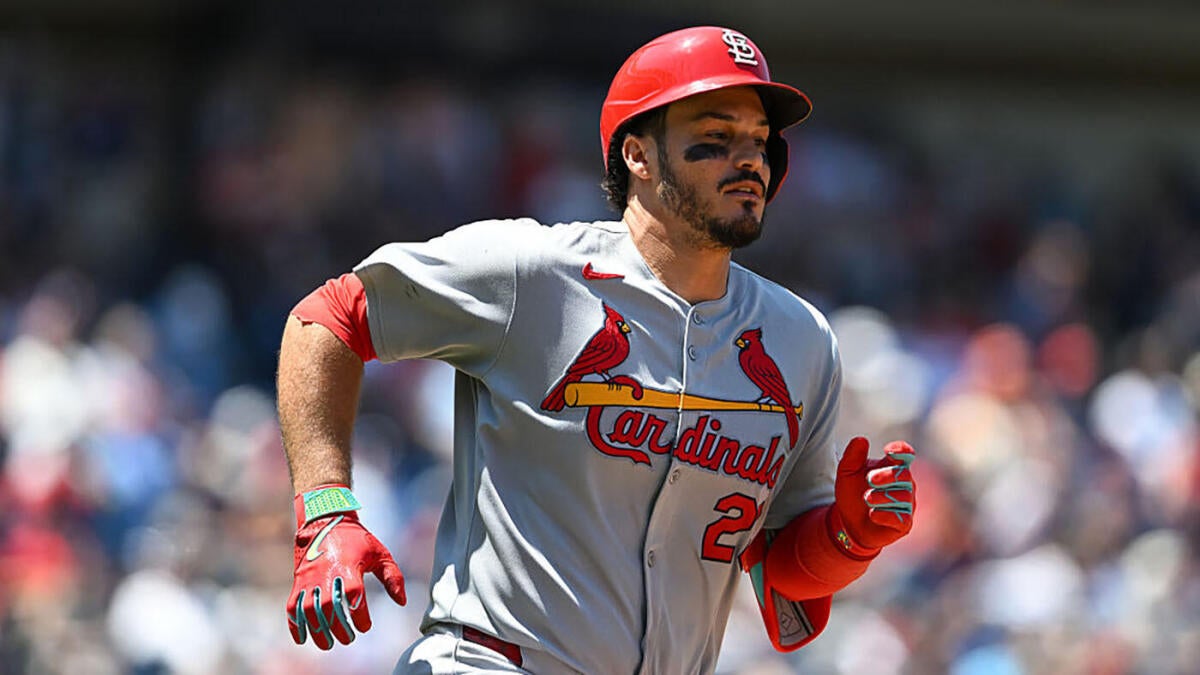The Cardinals’ Crossroads: Navigating Trade Rumors Surrounding Arenado and Gray
The St. Louis Cardinals, a franchise synonymous with excellence and a rich history of success, are at a pivotal moment in their season. As the MLB trade deadline approaches, the team finds itself in a position of uncertainty, with reports suggesting they are open to trading two of their most valuable players: Nolan Arenado and Sonny Gray. This willingness to explore potential deals signals a potential shift in the Cardinals’ strategy and raises questions about the team’s long-term vision. This report explores the complexities of these trade rumors, the factors influencing the Cardinals’ decisions, and the potential impact on the team’s future.
A Season of Unmet Expectations
The 2024 season has been a rollercoaster for the Cardinals and their fans. Entering the year with high expectations, the team has struggled to find consistency, leaving them on the periphery of playoff contention. The offense has been inconsistent, failing to provide the necessary run support for a pitching staff that, while talented, has also been prone to inconsistency. The bullpen, in particular, has been a source of frustration, with blown leads and late-inning struggles becoming all too common.
This underperformance has forced the Cardinals’ front office to reassess their approach. The team is no longer the perennial contender it once was, and the front office must decide whether to stick with the current roster or make significant changes to improve the team’s chances of success.
The Value and Complexity of Arenado and Gray
Nolan Arenado and Sonny Gray are two of the Cardinals’ most valuable assets, both on and off the field. Arenado, an eight-time All-Star and Gold Glove winner, was acquired to be the cornerstone of the Cardinals’ offense and defense. Gray, a proven ace, was signed to anchor the rotation and provide stability at the top of the pitching staff. However, both players come with complex contract situations that add layers of complexity to any potential trade.
Arenado is owed a significant amount of money over the remaining years of his contract and possesses a full no-trade clause, giving him the power to veto any potential deal. Gray, too, has a full no-trade clause and is set to earn a substantial salary in the coming years. These contractual obligations limit the Cardinals’ options and make trading either player a challenging endeavor.
The Motivations Behind Potential Trades
Several factors could be driving the Cardinals’ willingness to explore trades for Arenado and Gray:
The Challenges of Trading Arenado and Gray
Despite the potential benefits, trading Arenado and Gray presents several challenges:
Potential Trade Destinations and Returns
Identifying potential trade destinations for Arenado and Gray requires considering teams that are both competitive and have a need for their respective skills.
For Arenado, teams like the Los Angeles Angels, who have reportedly shown interest, could be a fit. However, the prospect of waiving his no-trade clause to join a non-contender remains uncertain. The Philadelphia Phillies have also been mentioned, although their current third base situation makes this less likely.
For Gray, teams in contention seeking to bolster their starting rotation could be potential landing spots. The New York Yankees, for example, have a history of pursuing high-caliber starting pitchers and could see Gray as a valuable addition.
The potential returns for Arenado and Gray would depend on the specific teams involved and the players they are willing to offer in exchange. The Cardinals would likely seek a combination of prospects, young major league-ready players, and potentially salary relief.
The Implications for the Cardinals’ Future
Trading Arenado and Gray would have significant implications for the Cardinals’ future:
Navigating a Difficult Decision
The St. Louis Cardinals face a challenging decision as the trade deadline approaches. Trading Arenado and Gray would be a significant move with far-reaching implications for the team’s future. The Cardinals must carefully weigh the potential benefits and risks before making a final determination. Ultimately, their goal should be to make the best decision for the long-term success of the organization, even if it means parting ways with popular and talented players.
A Fork in the Road: Embracing Change for a Brighter Tomorrow
The Cardinals stand at a crossroads. One path leads to maintaining the status quo, hoping that the current roster can find a way to contend. The other path involves embracing change, making difficult decisions, and building towards a brighter future. While the decision is not easy, it is necessary. The Cardinals must be willing to take bold action to ensure that they remain a competitive force in the National League for years to come. The choices made now will shape the franchise’s trajectory, and the front office must navigate this crossroads with a clear vision and a commitment to long-term success.











